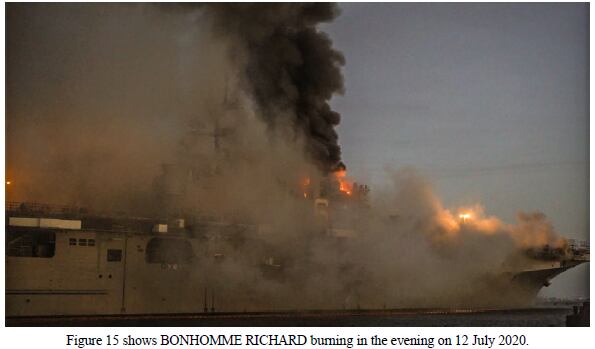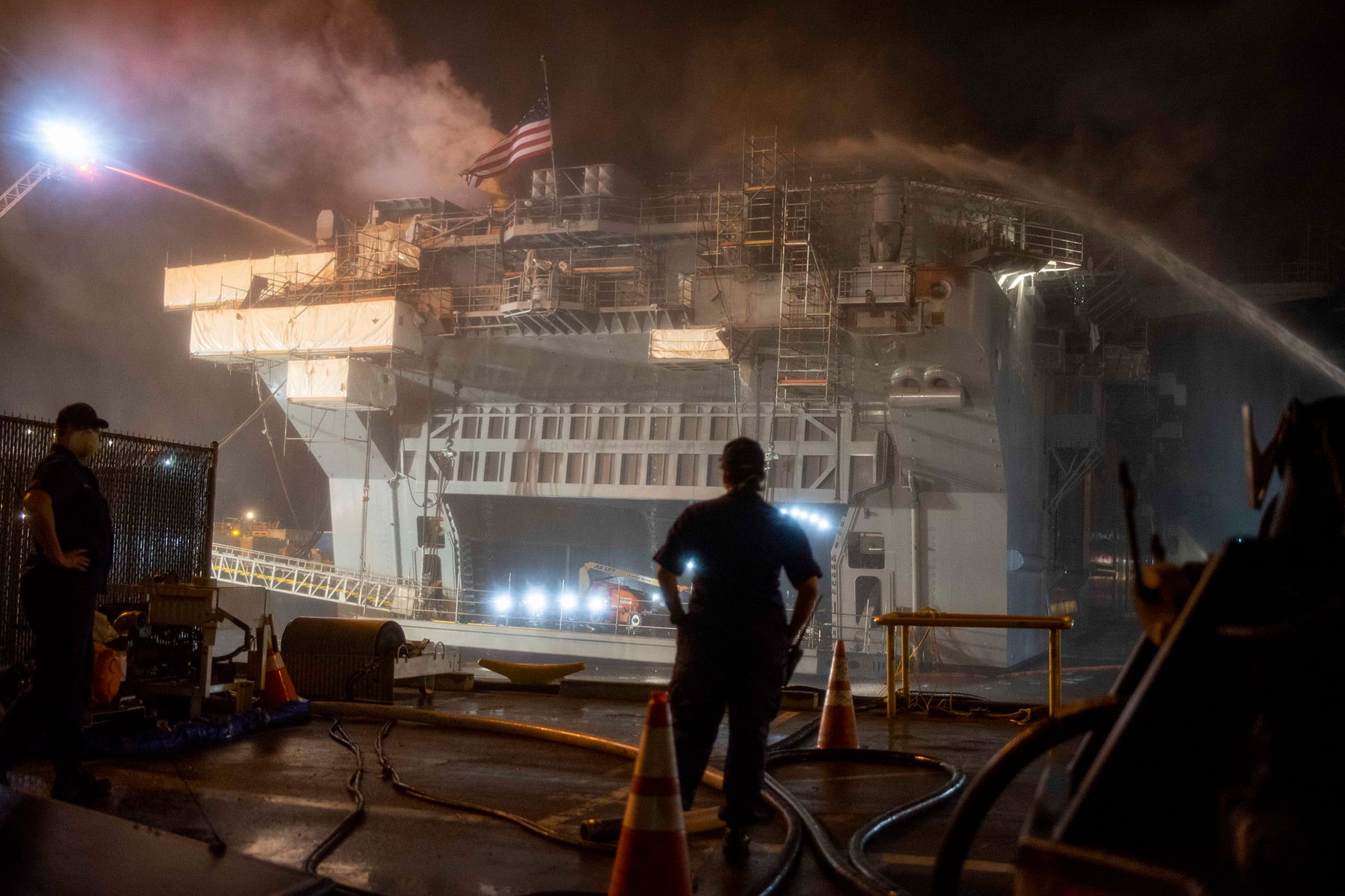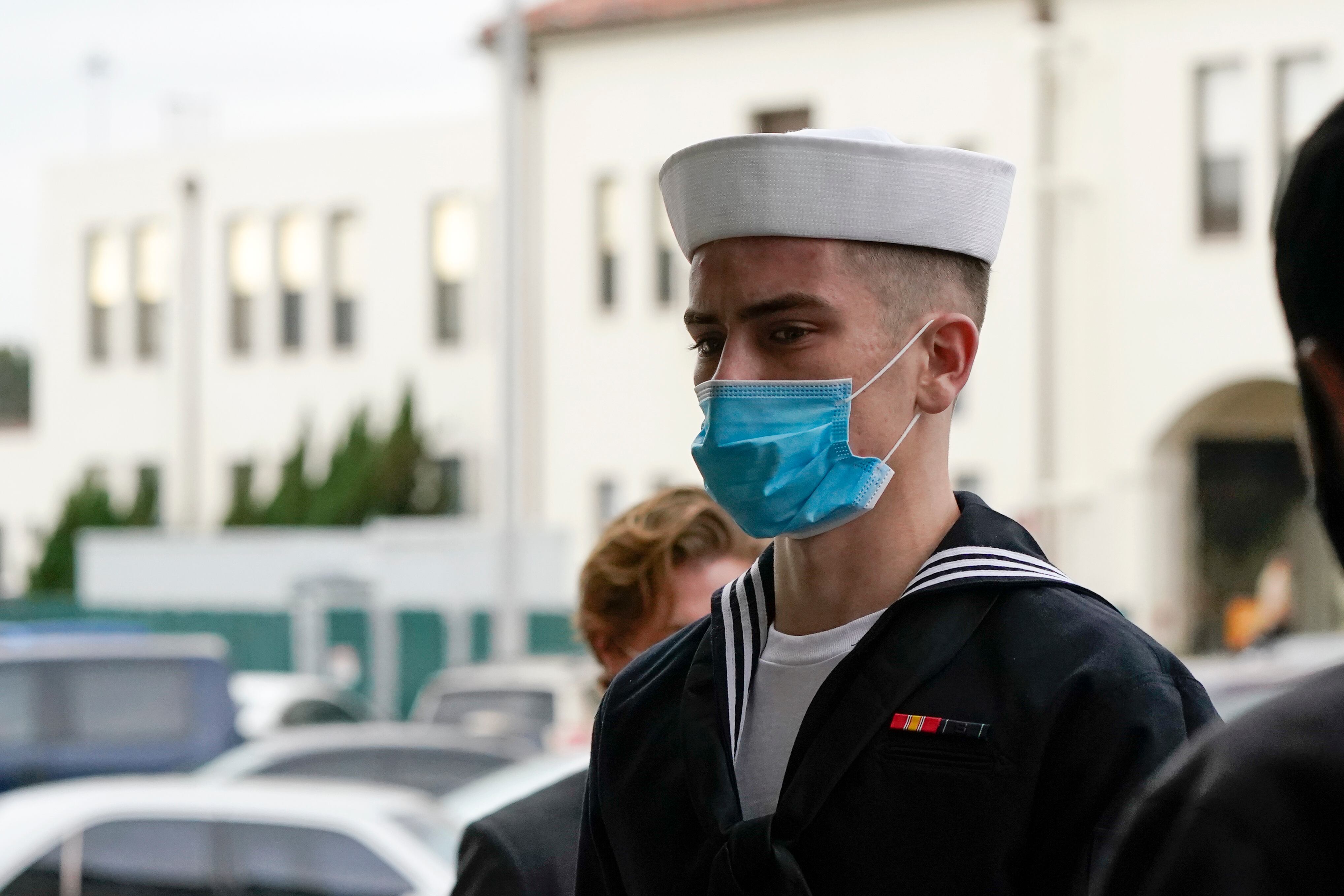SAN DIEGO — A key witness in the Navy’s case against a junior sailor accused of setting the fire that destroyed a U.S. warship last year testified Tuesday that he is certain that he saw the suspect in the area where the flames ignited, but acknowledged changing the account he initially told investigators.
Petty Officer Kenji Velasco blamed his nervousness for the changes to his story and said in military court during a preliminary hearing that he was now “100 percent” sure that he saw the suspect, Seaman Apprentice Ryan Sawyer Mays, descend to the ship’s lower vehicle storage area on the day of the fire.
Investigators have said cardboard boxes in the storage area were ignited, starting the blaze that burned for nearly five days on the USS Bonhomme Richard in July 2020, injuring dozens of personnel aboard and sending acrid smoke wafting over San Diego. It marked one of the worst non-combat warship disasters in recent memory. The amphibious assault ship was damaged so badly damaged that it had to be scuttled.
Mays has denied igniting the fire, insisting he was on the ship’s hangar bay when the fire started.
Mays is charged with aggravated arson and the willful hazarding of a vessel. The hearing that started Monday and continued Tuesday will determine whether there is enough evidence for a military trial.
RELATED

Navy prosecutors have alleged that Mays was “disgruntled” after dropping out of Navy SEAL training, but Mays’ lawyers said there was no physical evidence connecting him to the blaze.
Velasco and two other sailors testified Tuesday that Mays was combative, disrespectful and had a poor attitude after he dropped out of the grueling SEAL training and was assigned to the ship’s deck duty, which was largely cleaning work.
Mays’ lawyers grilled Velasco about not initially naming Mays as the person he saw. Initially, Velasco told investigators he did not recognize the person he saw that morning and said whoever did it did not belong to his deck department, which Mays did.
Velasco also contradicted himself about whether he saw Mays directly or from the side and about what time he saw Mays descend to the area.
He agreed with a defense attorney that he was told by investigators at one point “you just keep flip flopping around” so they did not know what had happened.
But Velasco said things became more clear in his mind after he thought about them more.
“I just wanted to make sure it was him that I saw,” Velasco said.
About 160 sailors and officers were on board when the fire started on the 840-foot (256-meter) vessel, which had been docked at Naval Base San Diego while undergoing a two-year, $250 million upgrade.
Winds coming off San Diego Bay whipped up the flames that shot up the ship’s elevator shafts and exhaust stacks. Two explosions — one heard as far as 13 miles (21 kilometers) away — caused the fire to grow.
More than 60 sailors and civilians were treated for minor injuries, heat exhaustion and smoke inhalation. The billion-dollar ship was scrapped because of extensive structural, electrical and mechanical damage.
RELATED

Officials assessing the ship’s damage found three of four fire stations on the ship had evidence of tampering: Fire hoses had been disconnected and one was cut, according to court documents.
Investigators also found uncapped bottles containing small amounts of highly flammable liquid near the ignition site, including one that tested positive for a heavy petroleum distillate such as diesel, kerosene or jet fuel, according to the documents.
Defense Attorney Gary Barthel pointed out that no DNA linked to Mays was found at the scene and questioned why investigators concluded Mays did it after they found a lighter among his belongings.
“Were there other individuals on the ship with lighters?” Barthel asked a federal fire investigator who testified for the Navy, and who agreed there likely were.
Defense lawyers on Monday objected to the hearing itself, saying they were not given enough time to review the evidence.
Navy prosecutors argued the case was carefully investigated. They have collected more than 28,000 pages of material and hours of video to build their case.
Dozens of Navy officials, including several admirals, face disciplinary action for systematic failures that investigators said prevented the blaze from being put out sooner, according to investigators.





